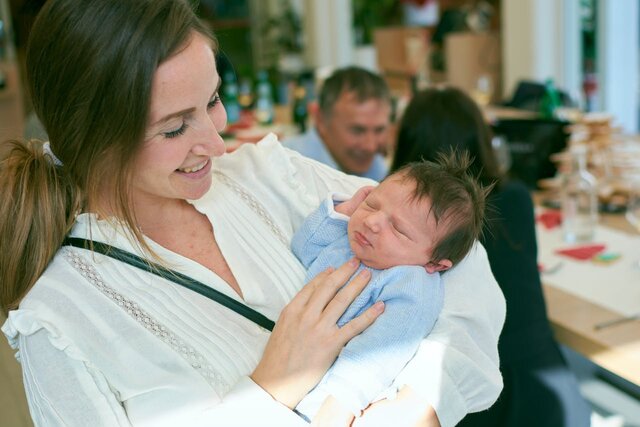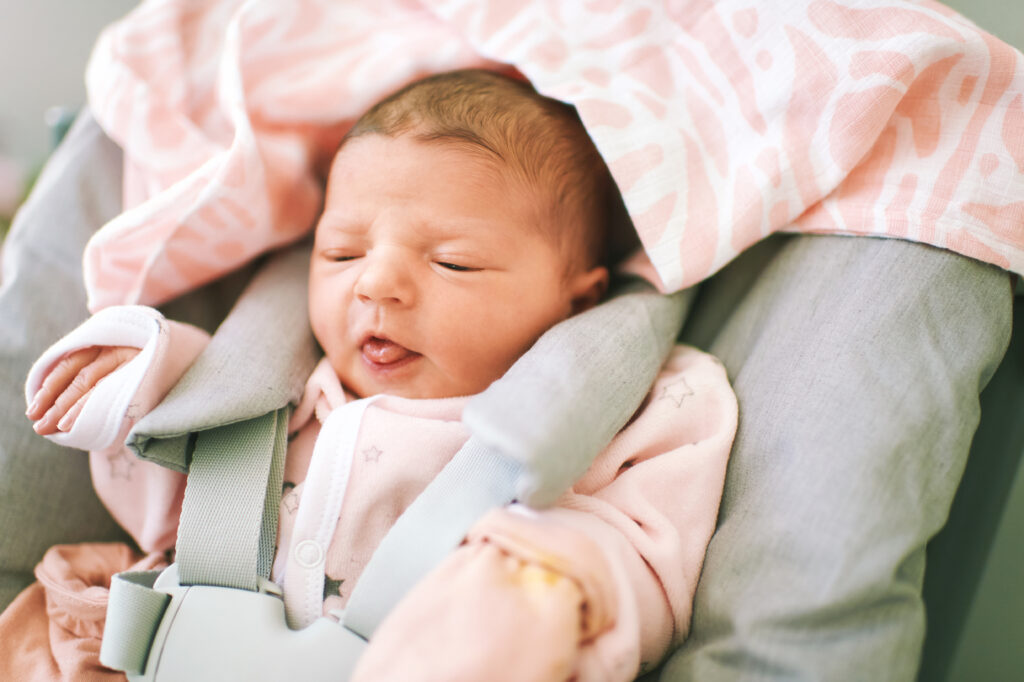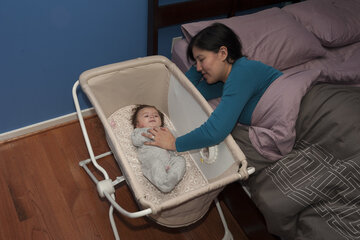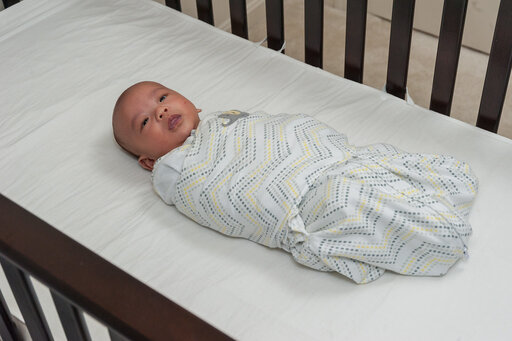
Feeding a baby in a car seat can be a common question for busy parents on the go. While it might seem convenient to multitask during car rides,
ensuring your baby’s safety and comfort is paramount. Car seats are designed to protect infants during travel, but they are not meant for feeding.
Attempting to feed a baby in a car seat poses choking hazards, especially while the car is in motion, as sudden stops or jolts can increase risks. Additionally, spills can create a mess and might make the car seat harder to clean.
For parents dealing with long road trips or hungry little ones, planning scheduled stops to feed your baby safely and securely outside the car seat is the best approach.
Always prioritize your baby’s well-being by keeping their feeding and travel times separate. Learn about proper feeding routines for car trips, safety recommendations,
and ways to keep your baby entertained and comfortable while traveling. With the right preparation, car rides with your baby can be stress-free and enjoyable for both of you.
Can You Feed a Baby in a Car Seat
Feeding a baby in a car seat is a question that arises often, especially during road trips or hectic schedules when stopping seems inconvenient.
However, there are important safety, health, and practical considerations that parents and caregivers should be aware of before attempting this.
Why Feeding in a Car Seat is Not Recommended
Choking Hazards:
One of the biggest risks of Can You Feed a Baby in a Car Seat is choking. Whether it’s a bottle, puree, or solid food, a baby can easily choke if not monitored properly.
Responding to a choking baby is nearly impossible while the car is moving, putting the child at serious risk.
Improper Feeding Position:
Babies should be fed in an upright position to prevent milk or food from going into their airways, which can lead to aspiration or respiratory issues. Car seats are designed to recline slightly for safety during travel, but this angle isn’t ideal for feeding.
Risk of Spills and Discomfort:
Feeding in a moving car increases the chance of spills, which can make your baby uncomfortable for the rest of the journey. Spilled formula, milk, or food can also cause skin irritation if not cleaned up promptly.
Distracted Driving:
Feeding a baby, even with the help of a passenger, can create distractions for the driver. A crying or uncomfortable baby can make it harder to focus on the road, increasing the likelihood of accidents.
Practical Tips for Road Trips with a Baby
Plan Feeding Breaks:
Schedule stops every 2-3 hours to allow your baby to stretch, feed, and get a diaper change. This not only ensures your baby is fed safely but also gives everyone a chance to recharge during the trip.
Pack Smart:
Bring pre-portioned bottles or baby food for easy feeding during stops. A cooler bag can help keep items fresh.
Engage a Passenger:
If you’re traveling with another adult, they can sit in the back seat to soothe or entertain the baby between feedings without resorting to feeding in the car seat.
Offer Water or a Pacifier for Comfort:
For fussy babies, offering water (if they’re old enough) or a pacifier can help calm them until the next feeding break.
Avoid Solid Foods in Transit:
Older babies or toddlers eating solid foods should also avoid snacking in the car due to choking hazards. Always supervise mealtimes outside the car.
Feeding a Baby Safely on the Go
If you must feed your baby while traveling:
Pull over to a safe location and take the baby out of the car seat.
Use a clean and secure space to feed your baby in an upright position.
Take the time to burp them afterward before continuing the journey.
Long-Term Safety Habits
Establishing good habits, like pulling over for feeding, reinforces the importance of safety for your child. As they grow older, they’ll understand that eating is an activity done in safe, designated spaces—not in a moving vehicle.
Can You Breastfeed a Baby in a Car Seat?

Breastfeeding provides essential nutrition and comfort for babies, but doing so in a car seat while traveling raises serious safety concerns. While the idea of feeding a baby on the go might seem practical, it’s crucial to consider the risks involved.
Why Breastfeeding in a Car Seat is Unsafe
Compromised Car Seat Safety:
A car seat is specifically designed to protect your baby during travel. If you unbuckle or adjust the straps to nurse, it compromises the safety features, leaving your baby vulnerable in case of a sudden stop or accident.
Risk to the Caregiver:
For mothers who attempt to lean over to breastfeed while the car is moving, the risk of injury increases. In the event of an accident, neither the mother nor the baby would be properly restrained, potentially leading to severe harm.
Improper Feeding Position:
Breastfeeding requires the baby to be held in a specific position to ensure a good latch and prevent choking or aspiration. The semi-reclined position of a car seat is not suitable for breastfeeding, increasing the risk of milk entering the baby’s airway.
Distracted Driving:
Trying to breastfeed a baby while in motion can distract the driver, putting everyone in the vehicle at risk. A crying or uncomfortable baby may create additional stress, but stopping to feed is the safest solution.
How to Manage Breastfeeding on the Road
If you’re traveling with a breastfed baby, planning can make the journey smoother for both you and your baby:
Schedule Regular Stops:
Plan for breaks every 2-3 hours to take your baby out of the car seat and nurse them in a safe, comfortable environment. This also allows you to stretch and refresh yourself during the trip.
Use a Breast Pump:
If you anticipate situations where stopping isn’t feasible, consider pumping breast milk in advance. You can store the milk in a cooler and have another passenger feed the baby with a bottle while the car is parked.
Create a Feeding Station:
Pack a travel nursing pillow, burp cloths, and other breastfeeding essentials to make nursing during stops more comfortable.
Comfort Between Feeds:
Use a pacifier or soothing music to calm the baby during travel. Sometimes, simply stopping to hold and comfort them without feeding them can make a big difference.
Can You Feed a Baby Bottle in a Car Seat?
Feeding a baby a bottle in a car seat can seem like a convenient option during car rides, but it’s important to approach this carefully to ensure
the baby’s safety and comfort. Here’s what parents and caregivers need to know about bottle-feeding a baby in a car seat.
Is It Safe to Bottle-Feed in a Car Seat?
While the Car is Moving:
Feeding a baby a bottle while the car is in motion is not recommended. Choking is a significant risk, and responding to a choking baby while driving is nearly impossible.
When the Car is Parked:
If the car is stationary and parked, bottle-feeding in a car seat is safer. However, even then, it’s important to supervise the baby closely to prevent choking or other feeding issues.
Risks of Bottle-Feeding in a Car Seat
Choking Hazard:
Babies cannot manage the flow of milk as effectively when semi-reclined in a car seat, increasing the risk of choking.
Air Intake:
Feeding in a reclined position can cause the baby to swallow air, leading to discomfort, gas, or spit-up.
Lack of Supervision:
If a caregiver is not directly monitoring the baby, issues such as choking or improper bottle positioning may go unnoticed.
Safe Practices for Bottle-Feeding in a Car Seat
- Park the Car:
Always stop the car in a safe location before feeding.
- Use the Right Position:
Keep the baby in the car seat but ensure the bottle is held at an appropriate angle to prevent air intake.
- Supervise Closely:
A caregiver should always watch the baby while feeding to monitor for signs of choking or discomfort.
- Use a Slow-Flow Nipple:
Slow-flow bottle nipples help regulate the milk flow, reducing the risk of choking.
When Is It Safe to Feed a Baby in a Car Seat?
Feeding a baby in a car seat is generally discouraged due to safety concerns, but there are specific situations where it might be considered safer. Understanding the risks and following guidelines can help parents make informed decisions.
Guidelines for Feeding in a Car Seat
The Car Must Be Stationary:
Feeding your baby in a car seat is only safe when the car is completely parked. The risks of choking or improper feeding posture can be better managed when the vehicle is not moving.
Bottle-Feeding Only:
If your baby is bottle-fed and unable to wait until your next planned stop, you can feed them in the car seat while parked.
Ensure the bottle is held at the correct angle to prevent air intake and that your baby remains in a semi-upright position to avoid choking or aspiration.
For Older Babies:
Older babies who can eat solid foods and sit up unassisted might have snacks or soft foods in their car seats while parked. However, even in this scenario, close supervision is essential.
Never Breastfeed in a Moving Car:
Breastfeeding in a car seat, even while parked, is not ideal. It requires removing the baby from the restraints, which compromises their safety. Always nurse outside of the car seat and resecure them properly afterward.
When Feeding in a Car Seat is Not Safe

During Vehicle Motion:
Feeding a baby in a moving vehicle poses choking hazards, increases the risk of improper positioning, and can be a distraction to the driver.
With Solid Foods:
Feeding solid foods in a moving car is unsafe for both infants and toddlers. Even older children are at risk of choking if not closely monitored.
When a Baby is Reclined:
The semi-reclined position of an infant car seat is not suitable for safe feeding. Babies should always be fed in an upright position to prevent choking or milk from entering the airway.
Safer Alternatives
- Plan Stops for Feeding: During road trips, schedule breaks every 2-3 hours to take your baby out of the car seat and feed them in a safe, comfortable position.
- Use Pumped Milk: Pump milk in advance and feed it to your baby during a stop. This provides the convenience of bottle-feeding while ensuring safety.
- Travel with Assistance: If possible, have another adult in the car to monitor and comfort the baby between feeding breaks.
How to Feed a Baby in the Car?
Feeding a baby during a car journey requires careful planning to ensure their safety and comfort. While feeding in a moving car isn’t recommended due to safety risks,
there are ways to handle feedings effectively during travel. Here’s how to safely feed a baby in the car.
Step 1: Plan Ahead
Schedule Regular Stops:
Plan to stop every 2-3 hours to feed your baby. This not only ensures safety but also gives your baby a break from sitting in the car seat for extended periods.
Pack Feeding Essentials:
Pre-prepared bottles with formula or breast milk (stored in a cooler if needed).
Baby food for older infants.
Burp cloths, wipes, and a bib to manage spills.
A nursing cover if breastfeeding in public is needed.
Step 2: Create a Safe Feeding Environment
Take Your Baby Out of the Car Seat:
Remove your baby from the car seat and hold them in an upright position for feeding. This is especially important to prevent choking or aspiration.
Step 3: Feeding on the Go
Use a Bottle Safely:
- Ensure the bottle is prepped in advance.
- Have another passenger hold the bottle and supervise the baby closely.
- Keep the baby strapped in their car seat and at the correct recline angle.
Risks of Feeding Babies in Car Seats

Feeding a baby in a car seat might seem like a convenient option during busy travel schedules, but it comes with significant risks. Understanding these risks can help parents make safer choices for their child’s well-being.
Choking Hazard Of Can You Feed a Baby in a Car Seat
Car seats are designed to position a baby in a semi-reclined posture, which is not ideal for feeding. This position increases the likelihood of choking because:
Babies may struggle to control milk flow from a bottle.
Solids or liquids can accidentally enter the airway, especially if the baby isn’t sitting upright.
Choking in a moving car is particularly dangerous, as it delays a caregiver’s ability to respond effectively.
Aspiration Risk
Aspiration occurs when milk or food enters the lungs instead of the stomach. This risk is higher when a baby is fed in a reclined position,
as gravity does not aid proper swallowing. Aspiration can lead to respiratory infections or more severe complications like pneumonia.
Increased Risk of Ear Infections
Feeding a baby in a reclined position can cause milk to backflow into the Eustachian tubes, which connect the throat and ears. This creates an ideal environment for bacteria to grow, increasing the risk of ear infections.
Distracted Driving
If a baby becomes fussy or struggles while feeding, it can divert the driver’s attention, increasing the likelihood of accidents. Even a passenger attempting to feed a baby can create distractions for the driver.
Compromised Feeding Experience
Feeding is not just about nutrition; it’s also a bonding moment between caregiver and baby. Feeding in a car seat, especially without proper positioning and eye contact, can disrupt this experience.
Improper Feeding Techniques
Bottles placed in the baby’s mouth without supervision can lead to overfeeding, choking, or discomfort.
Hands-free bottle-feeding devices are discouraged as they don’t allow the caregiver to monitor the baby’s reactions or stop the feeding if needed.
Practical Tips for Feeding Your Baby in the Car
Feeding a baby in the car is sometimes necessary during long trips or tight schedules. While it’s important to prioritize safety, there are ways to make feeding in
the car more manageable and comfortable for both you and your baby. Here are some practical tips for feeding your baby safely in the car.
Plan Ahead with Pre-Prepared Bottles or Snacks
Breast Milk: If breastfeeding, consider pumping milk in advance. Store it in bottles or breast milk bags and keep them cool until needed.
Always Stop the Car Before Feeding
Park Safely: Never attempt to feed your baby while the car is moving. Always pull over to a safe, stationary spot before starting the feeding session.
Comfortable Setting: If possible, find a shaded area or a quiet spot where you can comfortably feed your baby without distractions.
Hold the Bottle and Supervise Closely
Bottle-Feeding: If your baby is drinking from a bottle, always hold the bottle for them while the car is stationary. This ensures the milk flows properly and helps prevent choking.
Never Use Bottle-Feeding Devices: Avoid hands-free bottle holders as they don’t allow you to monitor your baby’s reactions and could increase the risk of choking.
Create a Comfortable Feeding Environment
Supportive Seating: If breastfeeding, use a portable nursing pillow to support your arms while holding your baby. This helps ensure both you and the baby are comfortable.
Keep Essentials Nearby: Pack baby wipes, burp cloths, and extra bottles or formula to ensure you have everything you need for a smooth feeding.
Take Time for Burping
After feeding, take the time to burp your baby, especially after a bottle feed. If your baby stays in the car seat after feeding, carefully remove them and hold them upright for burping.
Keep the Car Seat Secure
Proper Feeding Position: If you must bottle-feed in the car seat, ensure the baby remains in an upright position to reduce the risk of choking.
Legal and Safety Implications of Feeding a Baby in a Car

Can You Feed a Baby in a Car Seat, while sometimes necessary, comes with legal and safety concerns that parents and caregivers should consider.
It’s essential to prioritize both the well-being of the child and the legal requirements to ensure a safe and responsible driving environment. Here’s an overview of the key legal and safety implications.
Safety Risks While Driving
Distracted Driving:
The most significant safety concern related to feeding a baby in the car is distracted driving. When a driver attempts to feed a baby while the car is in motion, their attention is diverted from the road, which can lead to accidents.
Many jurisdictions have laws that define distracted driving as anything that takes attention away from operating the vehicle, including activities like eating, texting, or feeding a baby.
Legal Implication:
In many areas, distracted driving is illegal, and drivers caught engaging in such activities can face fines or even criminal charges, particularly if an accident occurs as a result.
The penalty for distracted driving varies, but it can include fines, points on the driver’s license, or more severe consequences if the incident results in injury or death.
Car Seat Safety Compliance
Unbuckling or Adjusting the Car Seat:
Feeding a baby in a car seat may require loosening or unbuckling the straps to make feeding more comfortable. However, this compromises the baby’s safety.
Car seats are designed to protect children in the event of a crash, and any alteration to their fit or positioning can reduce their effectiveness.
Legal Implication:
Most countries have strict laws regarding child safety in vehicles. In the U.S., for example, the National Highway Traffic Safety Administration (NHTSA) mandates that children under a certain age must be secured in an appropriate car seat.
Failing to properly restrain a child can result in fines and potential charges of neglect.
Car Seat Modifications:
Some caregivers may use devices such as bottle holders or hands-free feeding products, which are also discouraged because they can interfere with the proper function of the car seat.
Potential for Injury in an Accident
The Risk of Injury:
Feeding your baby in the car seat while the vehicle is moving can lead to dangerous consequences in the event of an accident.
A baby who is improperly positioned or unbuckled during feeding is at a significantly higher risk of injury due to sudden stops or collisions.
Legal Implication:
Parents or guardians may be held responsible for not ensuring the child’s safety while in the vehicle, especially if the baby’s injuries could have been prevented by adhering to car seat safety laws.


Leave a Comment